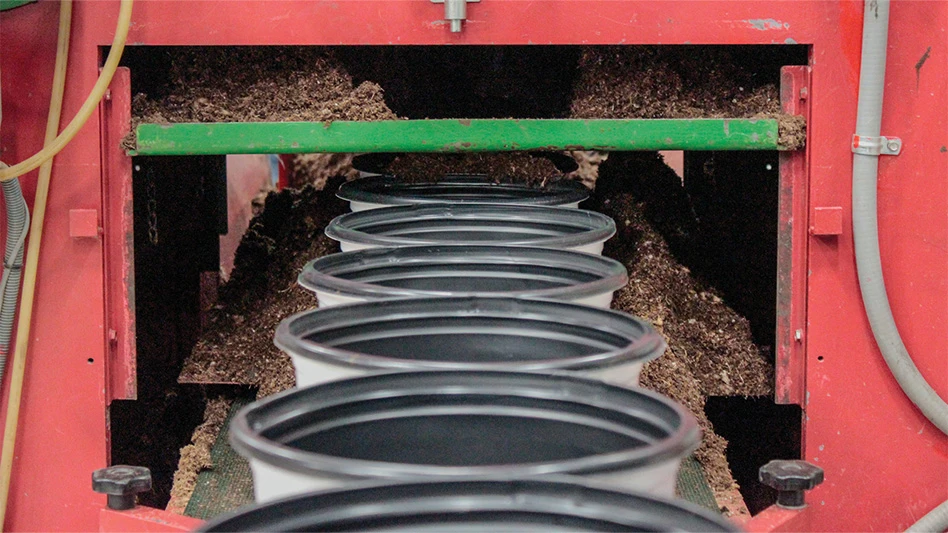



Late spring and summer seem to be a time when all IPM managers collectively exclaim, “Spider mites and broad mites and eriophyid mites, oh my!” Mite infestations regularly pop up on ornamentals and vegetable crops during this time, sometimes early or later depending on location. Just like the Tin Man, the Scarecrow, the Lion and Toto helped Dorothy go back to Kansas, we have the tools and advice to help you along the journey and get you to the promised land of perfect crops.
Mite populations can cause enormous damage within a short period of time because of their fast development and high reproductive rate. To prevent damage (which is often permanent), these mite populations must be found early with regular scouting. Examine the underside of leaves closely (with a hand lens or a magnifier) for mites and their eggs on plants that show symptoms of infestation or damage. You can also tap a plant gently over a piece of white paper and examine the debris and creatures landing on the white paper for mites. (This method also works for sampling biological control agents.)
The efficacy of cultural control tactics for mite management is rarely documented. We know that certain mite species may perform better under specific conditions. For example, twospotted spider mites thrive under hot, dry conditions, and broad mites seem to prefer high humidity. It’s not clear, however, if environmental manipulation can serve as an effective management approach. Mites often benefit from high nitrogen fertility, but there is no science-based fertilization guidance on how to balance the need between plant growth and mite management.
What’s known is the importance of sanitation and weed management. Mites are often polyphagous, meaning that they can feed and build up a population on many weed and crop species. Maintaining weed-free production areas eliminates potential sources and refuges of mites. Infested plants should be treated or discarded as soon as possible so that mites do not spread to other plants in the same area. Quarantining new plant materials or treating young plants can help limit the risk of introducing mites into the production area.
Correct mite identification is crucial for selecting the most effective biological control agents or miticides, as not all agents or miticides are effective against every mite species. The three most significant groups affecting indoor and outdoor ornamental crops, as well as greenhouse vegetable crops, are spider mites, tarsonemid (or thread-footed mites) and eriophyid mites. Additionally, flat mites and bulb mites can occasionally pose problems for specific crops.

Spider mites (Tetranychidae) are the most common mite pests in many crops. The twospotted spider mite infests a wide range of plant species, causing stippling, chlorosis, bronzing and webbing on plants. They are typically more active in the summer (and can be active year-round in heated greenhouses), which is why they are often considered a “warm-season” mite species. In contrast, the spruce spider mite and southern red mite are “cool-season” mite species, being more active in the fall and spring. Other spider mite species, such as the Lewis mite on poinsettias, can also cause problems.
The most problematic tarsonemid mite species (Tarsonemidae) are the broad mite and cyclamen mite. We are observing an increased prevalence of broad mite in the past few years, particularly on begonia and (ornamental and culinary) peppers. Tarsonemid mites often feed on the growing tips, which cause cupped or distorted leaves and flowers.
Eriophyid mites (Eriophyidae) are tiny, banana-shaped and have only two pairs of legs (four pairs in spider mites and tarsonemid mites). There are thousands of eriophyid mite species, and each species is host-specific. For example, rose rosette mite only infests roses, and agave mite only feeds on agaves and related species. Depending on their damage on specific hosts, eriophyid mites can also be called rust, rosette, gall and stunt mites. Because of their size, they can hide deep in crevices and leaf folds or whorls, making their contact with miticide solution very difficult.
Many growers manage mite populations successfully with biological control. There are many predatory mites and insects available, but not all of them can manage all mite species; therefore, mite species or family identification is paramount to selecting the right biological control agents. Most predator species, such as Phytoseiulus persimilis, the predatory midge, and the predatory beetles, are most effective against spider mites. The predatory mites, Amblyseius andersoni and Neoseiulus californicus, can feed on other mite species and could be used for managing broad mite and eriophyid mites. Biological control is most effective when used preventively, meaning that you should schedule regular releases of predators from the beginning of a crop.
Similarly, not all miticides are effective against all mite species and life stages. For instance, abamectin is most effective against nymphs and adults, while hexythiazox (a mite growth regulator) is most effective against eggs and nymphs. Bifenazate and cyflumetofen are effective against all life stages but only target spider mites. Some exceptional miticides, such as fenpyroximate (Akari), are effective against all mite species and all life stages on ornamental and vegetable crops. Akari is a miticide for “all mite species, all life stages,” which simplifies the development of a spray program. For detailed information on the activity spectrum of various miticides and biological control agents, consult this article: "Phytophagous Mites and Their Management on Ornamental Plants" (bit.ly/clemson-mites).
When using miticides, it’s important to rotate among different modes of action or IRAC (Insecticide Resistance Action Committee) numbers, as mites are notorious for developing pesticide resistance. To navigate this challenge, think of it as having a diverse cast of characters, each with their unique strengths, just like the Tin Man, the Scarecrow, the Lion and Toto on Dorothy’s journey. A successful miticide rotation program should include four or five modes of action. Since each mite generation lasts about one week, you’ll need to use a miticide with a different mode of action each time you spray, if you spray once a week. To help you along this path, I have included several example rotation programs in this article, guiding you toward the goal of producing a perfect crop.

Explore the July 2024 Issue
Check out more from this issue and find your next story to read.
Latest from Greenhouse Management
- The HC Companies, Classic Home & Garden merge as Growscape
- Eason Horticultural Resources will now officially be known as EHR
- BioWorks receives EPA approval for new biological insecticide for thrips, aphids, whiteflies
- ScottsMiracle-Gro transfers cannabis subsidiary to focus on core lawn and garden business
- Ellen Mackenbach-Lakeman appointed new CEO of Dümmen Orange
- Southern Garden Tour sets 2025 dates for trial garden open houses
- Belgian thermal screen manufacturer Phormium launches Noctis Thermo
- New book explores plants that thrive in Rocky Mountains





